Beverly Gray's Blog: Beverly in Movieland, page 59
February 28, 2020
Alice Adams Times Two

There’s more than one Alice Adams out there. She’s the heroine of a 1921 novel by Booth Tarkington, who was awarded the Pulitzer Prize for his tale of a young woman determined to climb into the upper ranks of her small town, despite her parents’ low social status. The novel, hugely popular in its day, was adapted into a silent film in 1923. Twelve years later, after the advent of sound, it became a hit romantic drama directed by George Stevens and starring a perfectly-cast Katharine Hepburn. She was nominated for a Best Actress Oscar (but was bested by Bette Davis), and the film was one of twelve (!) nominated for Best Picture.
I’ve not read Tarkington’s novel, but the Hepburn film is, I gather, mostly an accurate rendition, playing up the snobbery of small-town society but also the foolish dreams of a lower-middle-class mother and daughter who can’t be satisfied with the life they lead, instead fantasizing about taking their place among the swells. Hepburn, as a dutiful daughter who loves her parents the way they are but also a dreamer who deeply wants what she can’t afford, has never been fresher and more convincing. The conclusion of the film, though, departs from Tarkington’s original downbeat fadeout to give audiences a fairy-tale finish that’s hard to accept. (Word is that the production team fought for a more realistic end to the story, but was overruled by studio bosses at RKO who understood what would please the public.)
The other Alice Adams (1926-1999), was a celebrated author of novels and short stories. When she began life in Fredericksburg, Virginia, her parents—both of whom had literary connections—were aware of the Tarkington work, but doubtless felt it would soon fade from view. They christened their daughter Alice Boyd Adams to combine the first name of an elderly cousin with the family name of Alice’s mother. “Thus,” says biographer Carol Sklenicka, “her name offers a microcosm of the complex jostling of tradition and modernity that marked Alice’s entire life and career.”
Carol Sklenicka is my colleague in the Biographers International Organization, and her biography, Alice Adams: Portrait of a Writer was published late last year by Scribner. It’s a hefty work, full of facts and insights, by a biographer who became so intimately involved with the world of her subject that—through a bizarre set of circumstances—she helped to inter Alice’s ashes in the family cemetery after they were found on the shelf of a forgetful longtime friend. I admit that before now I was not much aware of Alice Adams’ work. But I’ve since read many of her precisely-written stories as well as a 1980 novel, Rich Rewards, set in Adams’ adopted home town, San Francisco. This novel, I suspect, is one of the more cheerful in Adams’ canon. Though realistic in its telling, it ends with some of the charm of a fairytale, because the most appealing characters all seem to get what their hearts desire.
Still, I can’t help seeing the novel in contrast to the Hepburn film. Alice, the character created in the 1920s, is obsessed with clothes and parties, but it’s her father’s limited earnings that shape her life. By contrast, Daphne, the lead character in Alice Adams’ novel, has a profession and works hard at it. (The novel’s wealthy idlers, like the vacuous Stacey, don’t come off well.) Then there’s the fact that Hepburn’s dewy-eyed Alice is won with a tender kiss. Daphne, like her creator, is an intensely sexual being, and it takes far more than kissing to secure her love.
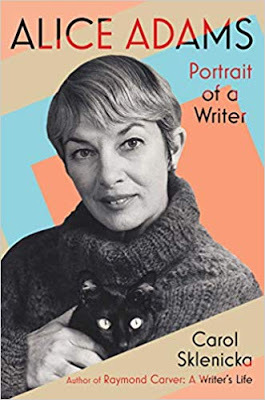
Published on February 28, 2020 11:05
February 25, 2020
Disney Daze
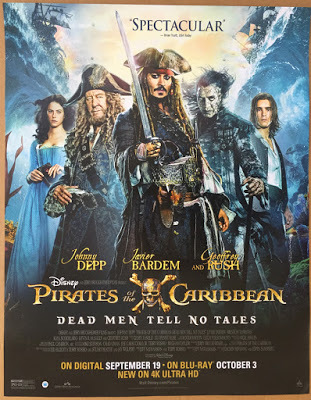
I’m newly back from three wonderful family-filled days at Disneyland, where movie fantasies come to life. The Disney empire (which recently seems to have gobbled up everything in sight, including the late Twentieth Century Fox) was of course founded on movie magic. Young Walt Disney, a cartoonist from the Midwest, found Hollywood success through his creation of a peppy character he called Oswald the Lucky Rabbit. When he decided to go out on his own, he discovered that he did not own the rights to Oswald. So, with a few tweaks around the ears and tail, Oswald was converted into a plucky mouse. The original Mickey Mouse—small but dauntless—became an inspiration during World War II, and an international symbol of American grit and chutzpah.
If Disney had stuck with Oswald, today’s millions of theme-park visitors might have been walking around wearing variations on rabbit ears. Instead, the two round circles on top of the head of the cartoon mouse have been re-imagined by the brand-conscious Disney folks as every possible sort of headgear. While at the park, I saw hundreds of people (adults as well as children) sporting head-bands and hats that married the Mickey look with references to Disney films. There was, for instance, the Ariel look (with a nod to The Little Mermaid, the ears are re-imagined as fan shells). And, in celebration of Disney’s purchase of the Star Wars franchise, I spotted an Artoo Detoo mouse-ears look. There are even special ears for newlywed couples, featuring a veil for the bride and a tuxedo-design for the groom. The one kind of Disney headgear I didn’t spot was one that was an essential part of my childhood: the once-ubiquitous Davy Crockett coonskin cap.
Davy Crockett, an actual historic tale-teller who was re-imagined by Disney writers as a red-blooded western hero, was a popular feature on an early TV show that began broadcasting in 1954. Originally a black-and-white anthology series called Disneyland, it had evolved by 1961 into Walt Disney’s Wonderful World of Color. By any name, it was designed to create enthusiasm for the Anaheim theme park, which opened to the public in 1955 (and yes, I made my first visit soon thereafter). In the early days, when attractions (though colorful) were pretty tame, you wanted to end up in Fantasyland, where the rides reflected the plots of a whole raft of Disney animated cartoons: Snow White, Peter Pan, Dumbo. Back then, “Mr. Toad’s Wild Ride” was about as exciting as things got. It was not long, though, before Disney imagineers became more ambitious in their designs. Today’s Disneyland features an Indiana Jones adventure that is genuinely scary, and of course there’s now an entire brand-new land reflecting the iconography (and the scares) of the Star Warsuniverse. Over at the resort’s second theme park, Disney California Adventure, Pixar’s Cars gets a whole cleverly-conceived section of its own. But my heart still belongs to the “Pirates of the Caribbean” ride, which combines some roller-coaster elements with an eerie visit to a town where some funny-creepy pirates hold sway. “Pirates” is the rare top Disney attraction that wasn’t based on a popular movie. But it proved so popular that a film franchise evolved out of the ride. Naturally, the ride itself was then tweaked to make room for an animatronic figure who looks a whole lot like Captain Jack Sparrow, as played by Hollywood’s Johnny Depp
A century ago, people didn’t need theme parks: there were plenty of physical scares in real life. But now we all seem to thrive on make-believe danger. Roller-coasters, anyone?
Published on February 25, 2020 11:53
February 20, 2020
UCLA Extension Helps Make “The Illegal” Happen
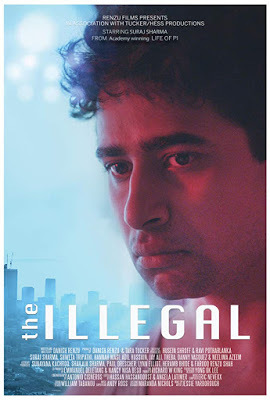
Enrollment is now underway for UCLA Extension’s spring quarter, which begins March 30. Within Extension, the Writers’ Program offers many courses for aspiring creative writers and screenwriters of all ability levels. It’s hard for me to believe it, but I’ve been teaching Extension screenwriting courses for a quarter of a century (yikes!), first on the UCLA campus and now online. For the past seven years, I’ve offered an advanced online course with the rather unwieldy title of One-on-One Feature Film Rewrite. Because it’s taught over the Internet, I deal with students from all across the globe: Australia, Taiwan, Mexico, Greece. This has led me to a number of unique experiences, like reading a sexy scene dreamed up by a Jesuit priest in Dublin. Some of my students—whom I personally select for the course—are retired professionals (doctors, teachers, bankers, airline pilots) who’ve always wanted to write. Others are film industry veterans, like the longtime cinematographer in my last class, who hope to make movies on their own terms.
One of my most motivated students has been Danish Renzu, who lives in L.A. but hails from a small town in the tension-wracked Indian state of Kashmir. Danish first came to the U.S. to study electrical engineering, but his passion for film won out, and he found himself earning a certificate in filmmaking at UCLA. Like most budding filmmakers, he really wants to direct. But he has learned the value of writing screenplays so as to provide himself with material that makes use of his deep understanding of a far-off culture.
His first feature film, shot in Kashmir in 2017, deals with an unfortunate facet of Indian life: the fact that a woman whose husband is taken away at a time of political turbulence must accept an in-between status that affords her few rights of her own. This ambitious film, called Half Widow, was a hit at some international film festivals, winning several awards.
I had nothing to do with Half Widow, which was written in Urdu and the Kashmiri language. But Danish’s next script won him a place in my advanced workshop. I could see its power immediately, but also had to acknowledge that it needed a lot of work. Though The Illegal is not Danish’s own story, it makes good use of his experience as a young Kashmiri film student trying to make his way in SoCal. The lead character, Hassan, is proud to have been admitted to USC’s famous film school, but finds that (despite immigration rules) he must work to afford his tuition. He ends up with a lowly job at an Indian restaurant, run by a conniving boss who takes advantage of his staff’s desperation to stay employed. When Hassan’s immigration status is threatened and he finds himself in danger of deportation, he ponders the need to give up his filmmaking dream while he slips under the radar as an “illegal.” Hassan’s drama is played out against the story of his family back home, dealing with their own joys and sorrows.
When I first read Danish’s script, I was worried that a long romantic section, involving Hassan’s liaison with an affluent American young lady, seemed too rom-com to fit in with the rest of the script. Both online and, later, in person, I argued for a re-structuring and re-thinking of this section. When I saw the finished film (starring Suraj Sharma of Life of Pi), I was delighted by what had been removed. Now The Illegal is both charming and powerful, a timely reminder of one of the great issues of our day.
Published on February 20, 2020 22:49
February 17, 2020
Kirk Douglas, A Champion Indeed
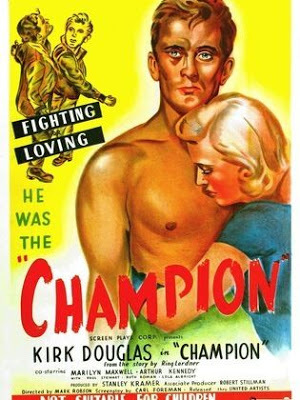
In the classic western, Gunfight at the O.K. Corral, Wyatt Earp worries about the health of a cantankerous dentist-turned-gambler, Doc Holliday. Holliday has a nasty cough that’s not getting better, and his serious boozing is not likely to cure it. It’s probable he doesn’t have long to live. Still, says Earp to Halliday, “You’re just ornery enough to live to a ripe old age.”
This line hit home for me, because it is delivered by Burt Lancaster (playing Earp) to someone who did indeed—despite several dramatic setbacks—live to a ripe old age. Doc Holliday, of course, is played by the late Kirk Douglas, who left us last week at the impressive age of 103.
Douglas’s up-from-the-gutter career began on the stage. Helped by his drama school classmate Lauren Bacall to land Hollywood roles, he won a featured part in his first film, The Strange Love of Martha Ivers, in 1946. Other early films included the noir classic Out of the Past. I was surprised to find Douglas part of the ensemble of a rather creative (if sappy) 1949 romantic drama, A Letter to Three Wives, in which three female friends find their marriages endangered by a sexy rival. It’s not easy to buy Douglas, known for his on-screen macho intensity, as a meekly dissatisfied schoolteacher who feels threatened by his wife’s high-paying career. But his very next film, Champion, sealed his reputation: playing Midge Kelly, a ruthless young boxer who’ll do anything to succeed, he’s unforgettable. This film marked his first of three Best Actor nominations. The second honored his performance as a tough-as-nails Hollywood producer in 1952’s The Bad and the Beautiful; the third recognized his ambitious but (to my mind) unconvincing turn as painter Vincent Van Gogh in 1956’s Vincente Minnelli extravaganza, Lust for Life.
Douglas’s years of friendship with fellow star Burt Lancaster are reflected in the John Sturges western I mentioned earlier, Gunfight at the O.K. Corral. This 1957 flick is a classic of its era. From the moment that Frankie Laine’s voice begins to warble the film’s mournful theme song while the camera sweeps across the Technicolor plains, we know we’re in good hands. The cast is filled with Golden Age standouts like Jo Van Fleet (as a bad girl with a heart of gold), Earl Holliman, and a very young Dennis Hopper (whom Lancaster tries to persuade to give up his gunslinging ways). But the film’s focus is on the gradual bonding of its two male stars: Lancaster as the noble, peace-loving, slightly sentimental Earp and Douglas as the erratic, self-destructive, but always gutsy Halliday. More than thirty years later, Lancaster and Douglas again shared the screen, this time in a slapstick comedy, Tough Guys, about ageing buddies who’ve spent three decades in the clink for trying to rob a train and now—upon their release—must figure out how to make their way in the modern world. It’s all pretty silly, but it’s striking how their roles haven’t changed much, with Lancaster still the romantic and Douglas the devil-may-care goofball.
Not everyone liked Kirk Douglas in his prime. I know a woman with longtime industry connections: in speaking of why she mistrusted Douglas she was wont to say, “He really is Midge Kelly.” Maybe so, but late in life (following some serious physical and emotional challenges) he devoted himself to religious exploration, meeting regularly with a noted L.A. rabbi to study the faith of his fathers. After two major strokes, he wrote and worked on behalf of stroke victims, and was known for building playgrounds for needy L.A. kids. All hail!
Published on February 17, 2020 12:22
February 14, 2020
Sketch to Screen-- Hollywood's Oscar Nominees Talk Costuming
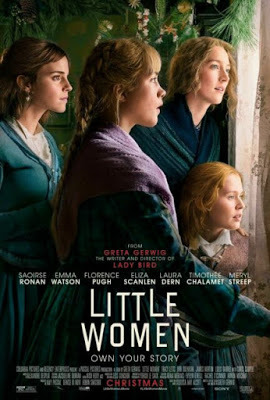
By the time you read this, the 2020 Oscar results will be in the books, and the world will know who has taken home the golden statuette for Best Costume Design . Could it be Mark Bridges, who outfitted the Joker in his wine-red suit? Or Jacqueline Durran, for her color-coded gowns reflecting the prim nineteenth century world of Little Women? Perhaps the winners were Christopher Peterson and fifteen-time nominee Sandy Powell, joining forces on the 6,000 period costumes needed for The Irishman. Or Mayes C. Rubeo, a first-time nominee who made a big impact on a small budget (I loved those telltale spectator pumps) with Jojo Rabbit. Or maybe Arianne Phillips, who captured the Hawaiian shirts and the laid-back styles of 1969 for One Upon a Time . . . in Hollywood.
Sitting at my computer on the morning of the Oscar ceremony, I didn’t know who had triumphed. But I was thinking back to a very special event I attended on Saturday, February 8. Called “Sketch to Screen,” it was a celebration of costume design, sponsored by UCLA’s David C. Copley Center for Costume Design, along with Swarovski, the crystal company that is now enjoying its 125th year in business. The highlight of the afternoon was a spirited panel led by UCLA professor and costume historian Deborah Nadoolman, herself an Oscar nominee for the over-the-top designs in Coming to America. All six of this year’s nominees were present on-stage, and Nadoolman’s smart questions led them to reflect in colorful terms on their profession.
All agreed that costumes are essential contributions to Best Actor and Best Actress performances. Why? Because appropriate clothing and footwear help performers connect with the time and place their characters are supposed to inhabit. Beyond this, they help the actors shape their characters’ approach to life. Said the always articulate Nadoolman, “We give actors the clothes; the actors give the world the performance.” Generally lead actors are part of the discussions about their costumes, and try them on far enough in advance to incorporate their look and feel as they create their characterizations. But sometimes the costume is the first thing that introduces an actor to his or her part. Arianne Phillips remembers one low-budget quickie for which Malcolm McDowell admitted he hadn’t had time to read the script: the clothing she’d designed provided his first instructive glimpse of the man he was supposed to be.
The panelists all admitted they were bothered when actors insisted on comfortable modern footwear (like, for instance, ugg boots) hidden beneath period finery. The story was told about how director Stephen Frears, shooting Dangerous Liaisons in 1988, allowed Michelle Pfeiffer to wear her own cowboy boots underneath her 18thcentury gowns. This may have put her at ease, and but it also affected her gait on screen in a way that was far from appropriate.
Of course no one expects 100% fidelity to the hugely constricting styles of the past. And there are times, for the purposes of artistry and character exploration, when designers deviate from strict fidelity to period dress. Sandy Powell, whose designs for last year’s The Favourite were deliberately eccentric, insists, “We’re not making documentaries.”
Sometimes, though, an authentic fabric or ornament establishes the reality of an outfit. For Brad Pitt’s role in Once Upon a Time . . . in Hollywood, Phillips located a massive vintage belt buckle that proclaimed its wearer a proud member of the Stuntmen’s Association. This buckle, along with Hawaiian shirts, jeans, and moccasins, helped turn Pitt’s Cliff Booth into a cool customer whom audiences, and award-giving bodies, have loved. OK, now the results are in. Congratulations to Jackie Durran for her award-winning designs – period frocks with deliberately modern touches -- for the four March sisters
Published on February 14, 2020 16:11
February 11, 2020
The (2nd) Morning After the Oscars: With Love for Hair and Other Cool Things
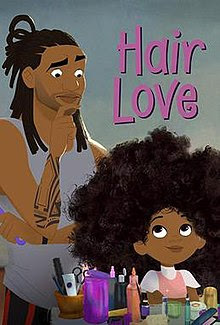
Now that the hoo-hah is over (the jewelry is going back in the vaults, and the stagehands are sweeping up the sparkles), I guess it’s time to assess my feelings about the annual exercise in rampant narcissism and mock-humility. It was exciting, boring, funny, perverse, sweetly sad, and all-around unique, much like last year. As always, I wouldn’t have missed it for the world.
The victory of Parasite was a thrill, and the awarding of the top Oscar to this beautifully made, audaciously entertaining work of thought-provoking foreign-language cinema ended the evening on the highest of high notes. I loved the artful way that the film’s writer/director, Bong Joon Ho, paid tribute from the stage to grand-master Martin Scorsese. In fact, Scorsese received so many shout-outs that for much of the evening he seemed the happiest man in the audience. Until, of course, his The Irishman didn’t take home a single statuette. Which was fine by me.
The acting awards generated little excitement for me because every one of the four ultimate winners had been sweeping up accolades for months. I’m never going to be a Renee Zellweger fan, nor do I have much affection for tortured super-villains of the Joaquim Phoenix variety. But I’ve got to hand it to Brad Pitt, both for his marvelously laid-back turn in a great film, Once Upon a Time . . . in Hollywood, and for his wit on the podium. It’s in iffy taste to make political pronouncements while accepting an acting award in this company, but Pitt’s glancing John Bolton remark seemed perfectly timed and delivered.
But my biggest enthusiasm is for the woman who won in the supporting actress category. Like Martin Scorsese, Laura Dern has a Roger Corman connection that endears her to me. She tells anyone who’ll listen that she was conceived on the set of Roger’s 1966 biker epic, The Wild Angels¸ in which her parents Bruce Dern and Diane Ladd both had featured roles. But that’s not the only reason I like her. I’ve been appreciating her acting for years, with a special admiration for her leading role in a small 1985 indie called Smooth Talk. It’s based on one of Joyce Carol Oates’ best stories, “Where Are You Going, Where Have You Been?” Dern plays a bored, rebellious fifteen-year-old who leaves her home in search of adventure and finds far more than she bargained for. In the story as written, we’re inside young Connie’s mind; on screen Dern’s performance subtly lets us see what makes her tick.
There’s also the fact that she’s beloved by the film community: she’s on the board of the new up-and-coming Academy Museum, the opening of which was announced with much fanfare during the broadcast. As a museum donor, I attended a session where Dern interviewed the project’s architect, Renzo Piano, revealing that she can be charming and witty even without someone writing her lines. And of course the voters took note of the fact that, while awards-nominated for playing a tough-as-nails divorce attorney in Marriage Story, she also scored in the much gentler, much more maternal role of Marmee in Little Women. The lady has range to go along with her unflagging energy, and I’m delighted she got the win.
One thing more: I’m generally out of the loop when it comes to the Oscar-nominated short subjects. They sometimes play on bills around L.A., but I rarely get to see them. After the fact, though, I found it was easy to watch for free the winning animated short, “Hair Love.” Check out this crowd-funded instant classic here!
Published on February 11, 2020 12:58
February 7, 2020
An Over-The-Hill Irishman and a Raging Bull
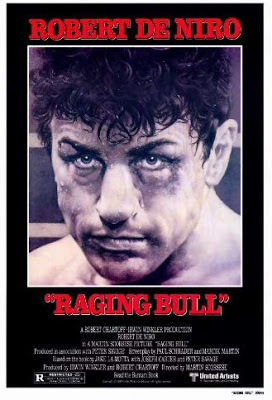
Despite its ten Oscar nominations, I can’t pretend to be a fan of Martin Scorsese’s The Irishman. Though some critics have praised this story of the mob-directed murder of Jimmy Hoffa as Scorsese at his violent best, I found it too over-blown and too meandering to warrant a 3 ½ hour run-time. But after struggling to watch The Irishman, I felt compelled to look back to the days when Scorsese—though much overlooked in the Oscar department—was truly at the height of his powers.
Scorsese pretty much moved into the big-time in the 1970s. Starting out as a teacher of film studies at NYU, with a handful of indie films to his credit, he fell under the tutelage of my former boss, Roger Corman, who knew talent when he saw it. Having shot the Bonnie and Clyde-ish Boxcar Bertha for Roger, Scorsese made the breakthrough urban drama, Mean Streets (1973), which introduced him to the talents of Robert De Niro. The 1976 collaboration of director Scorsese and star De Niro on Taxi Driver confirmed their artistic partnership. (One year earlier, De Niro had bagged a Best Supporting Actor Oscar for his role in The Godfather Part II. Though he was nominated for Best Actor for Taxi Driver, and the film was named a Best Picture nominee, Scorsese’s directorial contribution to this powerful and still relevant study of all-American mayhem was somehow overlooked.)
Raging Bull became the movie that gave Scorsese his first Oscar nomination (though he did not actually win the statuette until The Departed in 2007). This down-and-dirty biopic of Jake LaMotta tells a small story—about a real-life boxer whose propensity for violence spills over into his private life—but tells it so brilliantly that it cannot be easily shrugged off. Dynamic black-and-white cinematography conveys a dark, edgy mood, and it’s complemented by the razor-sharp editing of Thelma Schoonmaker, whose work here won her the first of her three Oscars. (The other two, as well as her five additional nominations, are all for Scorsese-related projects.) Members of the Scorsese stock company who appear prominently in Taxi Driver include star De Niro and co-star Joe Pesci, who vividly portrays the brother LaMotta can’t always bring himself to trust.
If The Irishman seems like a valedictory of sorts, it’s partly because both De Niro and Pesci pop up in major roles, along with another Scorsese favorite, Al Pacino. (Yes, Schoonmaker was the film editor.) There’s also the fact that The Irishman takes as one of its big themes the passage of time: how hugely people change as the years go by. This is vividly brought home by scenes of De Niro’s Frank Sheehan character in a nursing home, exploring religion as a way to come to terms with the sins in his past. There’s been much discussion about how Scorsese, to make his stars’ younger scenes credible, used a digital de-ageing technique that many found distracting, in order to return his characters to a more youthful appearance. The irony is that Raging Bull too is built around the passage of time. The film starts with the tubby middle-aged LaMotta practicing a dramatic monologue that’s going to kick off an attempt at a stage career. Then we jump to an earlier era in which he’s strong, trim, and boasts a full head of hair. De Niro, ever the perfectionist, stopped production for four months in order to gain 70 pounds so that when he delivers his “coulda been a contender” speech he’s clearly over-the-hill. Too bad that for The Irishmanthat method doesn’t work in reverse.
Thanks to my radio pal Bob Morris in Fargo, North Dakota, here's a broadcast of me on KKGO, making my annual Oscar predictions.
Published on February 07, 2020 11:47
February 4, 2020
Blowing Up the News Media in “Bombshell”

In popular movies of the mid-twentieth century, the word “bombshell” automatically suggested a woman of sizzling sexuality. “Bombshell” was generally proceeded by the nicely alliterative “blonde,” and Marilyn Monroe was the prime example. A bombshell, of course, also describes an unexpected revelation that creates major chaos. On both counts, the 2019 film Bombshell is well-named. Its heroines all bear a striking resemblance to Barbie dolls, and it deals with a set of #MeToo revelations that blew up the power structure at the almighty Fox News.
The revelations of course concern the late Roger Ailes, the longtime Republican political consultant who ran Fox News (and Fox television stations) with an iron fist. The canny Ailes knew what it took to attract viewers: not only a clear-cut political ideology but also a bevy of gorgeous female newscasters dressed to show off the their long, shapely legs, As Ailes was apt to insist, “TV is a visual medium.” What Ailes did not admit to was his predilection for keeping his female hires in line by demanding (and getting) sexual favors in exchange for plum assignments and promotions. The movie, set in the key year 2016, depicts what happens when a veteran Fox anchor, Gretchen Carlson, decides to sue Ailes for sexual harassment. She and her lawyers are of course counting on additional Fox employees coming forward to corroborate her story. Though Carlson’s lawsuit is the engine that drives the story, it’s paired with the situation of Fox’s queen bee. Megyn Kelly, an attorney who had become an influential news host, incurred the wrath of candidate Donald Trump when she dared to question him about his behavior toward women during a 2015 presidential debate. The issue at hand: would Kelly risk her power by telling her own Ailes stories in public?
Kelly is played by Charlize Theron, who used her Hollywood clout to get this film made, serving as one of its producers. The extent to which she reproduces Kelly’s well known face and voice is uncanny: no wonder that one of this film’s three Oscar nominations is for her performance and another has gone to the hair and makeup team who transformed her into Kelly, Nicole Kidman into a bland blonde Carlson, and (most remarkably) John Lithgow into a porcine Roger Ailes. Lithgow, one of my favorite character actors, is a far cry here from the lovably spacey Dick Solomon in TV’s 3rd Rock from the Sun. His creepy demand for a new young hire to hike up her skirt well past the point of propriety is probably this film’s most indelible moment.
Though I appreciate Bombshellspelling out a key chapter in American social history, I do have some questions about its storytelling methods. With the focus largely on Kelly, I’m not sure what to make of sacrificial lamb Carlson. Before she files her lawsuit, is she moved by a growing feminist consciousness? Doesn’t she realize that doing a “hard-hitting” show in which she pointedly doesn’t wear make-up is pretty silly? And what about the third in the trio of gutsy, beautiful blondes? Margot Robbie (also Oscar-nominated) plays what is billed as a composite character, here named Kayla. She starts out as a Fox true believer, proud to announce her religious and political leanings, which are right in sync with the network. Yes, she’s ambitious to become on-air talent, but she also hangs out with (and once shares a bed with) Fox’s resident lesbian (Kate McKinnon). In her key scene with Ailes, she’s perfected the deer (or should it be “dear”?) in the headlights look, but can we believe her evolution?
Published on February 04, 2020 12:58
January 31, 2020
Marriage Stories: The Coupling of Noah Baumbach and Greta Gerwig

It’s well known among film buffs that Noah Baumbach and Greta Gerwig are a couple. They’re also the parents of a baby boy, born last March, just after she completed filming of Little Women. No indication, though, that these two golden Hollywood folks (both of whom are up for 2020 Best Screenplay Oscars), have wedding plans. In much of today’s America (as in many nations around the world) the stigma of bearing a child out of wedlock has rapidly disappeared. Little Harold is not likely to face social stigma for being what used to be called a bastard. Today the term has a far different, far more metaphoric, connotation, referring to a person’s character rather than his or her parentage. It’s all indicative of how much the matrimonial state itself has evolved over the course of our lifetimes.
Both Baumbach and Gerwig are Oscar nominees for writing (though not, alas, for directing) major films that look at marriage with a somewhat jaundiced eye. Baumbach, who was previously responsible for 2005’s The Squid and the Whale, seems to have taken much to heart his own parents’ divorce when he was an adolescent. That film focuses on the impact of the parents’ split on 16-year-old Walt, who starts acting out at school when his mother and father take on new romantic partners. Baumbach has never hidden the fact that the details of the story match in many way his own family experience.
Though Baumbach’s Marriage Story seems further away from autobiography, it too explores the price that is paid by the entire family once parents separate, even when they mean their split to be amicable. The film begins by acknowledging the psychic cost to all concerned, then plunges us into the additional pain inflicted once attorneys get involved. It’s not a pretty picture, even despite the best of intentions. The American legal system, in fact, seems almost designed to make everything worse. One saving grace: time may not heal all wounds, but it does help those most intimately affected move on and learn to live in new ways
Then there’s Gerwig’s take on Little Women. Louisa May Alcott’s famous nineteenth-century novel for girls of course endorses conventional values, including the blessings of matrimony. The novel is surprisingly frank in recognizing that girls without money—and this describes Alcott’s semi-autobiographical March sisters—must needs consider being on the lookout for wealthy suitors. Alcott’s book hardly endorses this point of view, but makes it clear that Meg (the pretty eldest sister who marries for love) sometimes suffers over what she cannot afford. Then there’s Jo. Everyone who’s read the novel knows that Jo, having spurned the charming Laurie as a husband, finally finds romantic happiness with a kind of Germanic deus ex machina: a kind, jolly German professor who encourages her literary talents and allows her to live a married life that’s slightly outside the realm of convention. Jo of course is Alcott’s own alter ego, but Alcott herself never married. Instead she devoted her adult life to her writing career and to fulfilling the needs of her extended family.
Gerwig’s version of Little Women encourages us to see the close relationship of Jo March to her creator. Without distorting the original story, she reminds us of how dedicated Jo is to the notion of career over matrimony. So how does she reconcile her clearly feminist perspective with the ending Alcott herself wrote? It seems wrong to spoil the film by going into detail, but Gerwig’s Jo (while doing what needs to be done) ultimately remains true to her independent self.
Published on January 31, 2020 10:41
January 28, 2020
In Memoriam: A Superstar and a Supporting Player
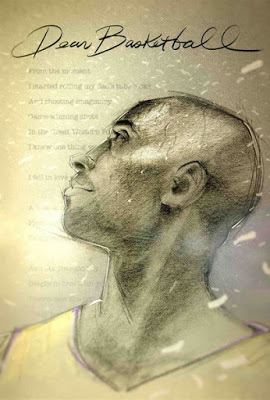
All of Los Angeles and (I suspect) all of the world now mourn the loss of the brilliant, talented, unpredictable Kobe Bryant. More than simply a retired athlete, he was clearly a force of nature, bent on exploring all facets of life-in-the-big-city to the extent of his considerable powers. As movie buffs know, Kobe was even an Oscar winner, for the 2017 animated short called Dear Basketball. It’s a sweet (and beautifully hand-drawn) rendering of Bryant’s passion for the sport, one that recognizes in a simple but heartfelt way both the joys of the game and the limitations of the human body. It’s hard to dwell on the loss of such a man, and devastating to think of the thirteen-year-old daughter (yes, another basketball talent) who died with him, on the way to a practice.
But I’m also feeling somber because of the loss of someone much older and much less famous than Kobe Bryant. Marsha Kramer never won a major award, but she was a theatre professional from young adulthood until her death last week at the age of 74. Obituaries particularly noted her 14 appearances on TV’s Modern Family. She had a recurring role on Frasier, and appeared on such classic shows as Touched by an Angel, Cheers, Malcolm in the Middle, and Newhart. In addition, there were small parts in movies like 2013’s The Great Gatsby. By far her biggest credit, though, was as Wendy Darling, soaring off to Neverland in Sandy Duncan’s famous Broadway revival of Peter Pan.
I knew Marsha Kramer before all of that, when we were both still in high school. UCLA was offering a special six-week theatre workshop for stage-struck teenagers: kids came from all over SoCal to take part in acting exercises and perform in one-act plays for an invited audience. It was an interesting group. Some of us had family showbiz connections (like Lee J. Cobb’s pretty daughter, Julie), but most of us didn’t. Some were doing this for fun, and others were so serious about acting careers that they already had agents and stage names. Naturally we all kept an eye out for the future stars in our ranks. As was usual with high school drama kids, girls far out-numbered boys and had a far harder time getting cast in showy roles. There was one young man we all regarded as particularly talented and charismatic, and we anticipated seeing his name (either his real name or his chosen stage moniker) in lights. Never happened. But a very nice fellow named Richard Dreyfuss, who had never especially impressed me with his acting chops, has had a long, storied career, climaxing with a Best Actor Oscar for The Goodbye Girl (yes, he beat out Richard Burton in Equus).
As for Marsha Kramer, the pride of the Westchester High School drama department, she was small, cute, poised, and had a lovely singing voice. So it wasn’t surprising that she nabbed a really good juvenile role at UCLA. Though I didn’t think much then about her future prospects, she was extremely likable, and years later I got a big kick out of her Peter Pan appearance. My favorite memory: when I saw the show circa 1982 at L.A.s Pantages Theatre, I overheard two women in the lobby marveling at the fact that the adorable little Wendy flying around the stage was actually 28 years old. The joke for me is that they were almost 10 years off: Marsha was probably 37 at the time, slightly older than Sandy Duncan. But no, I didn’t spill the beans.
Published on January 28, 2020 12:11
Beverly in Movieland
I write twice weekly, covering topics relating to movies, moviemaking, and growing up Hollywood-adjacent. I believe that movies can change lives, and I'm always happy to hear from readers who'd like t
I write twice weekly, covering topics relating to movies, moviemaking, and growing up Hollywood-adjacent. I believe that movies can change lives, and I'm always happy to hear from readers who'd like to discuss that point.
...more
- Beverly Gray's profile
- 10 followers



